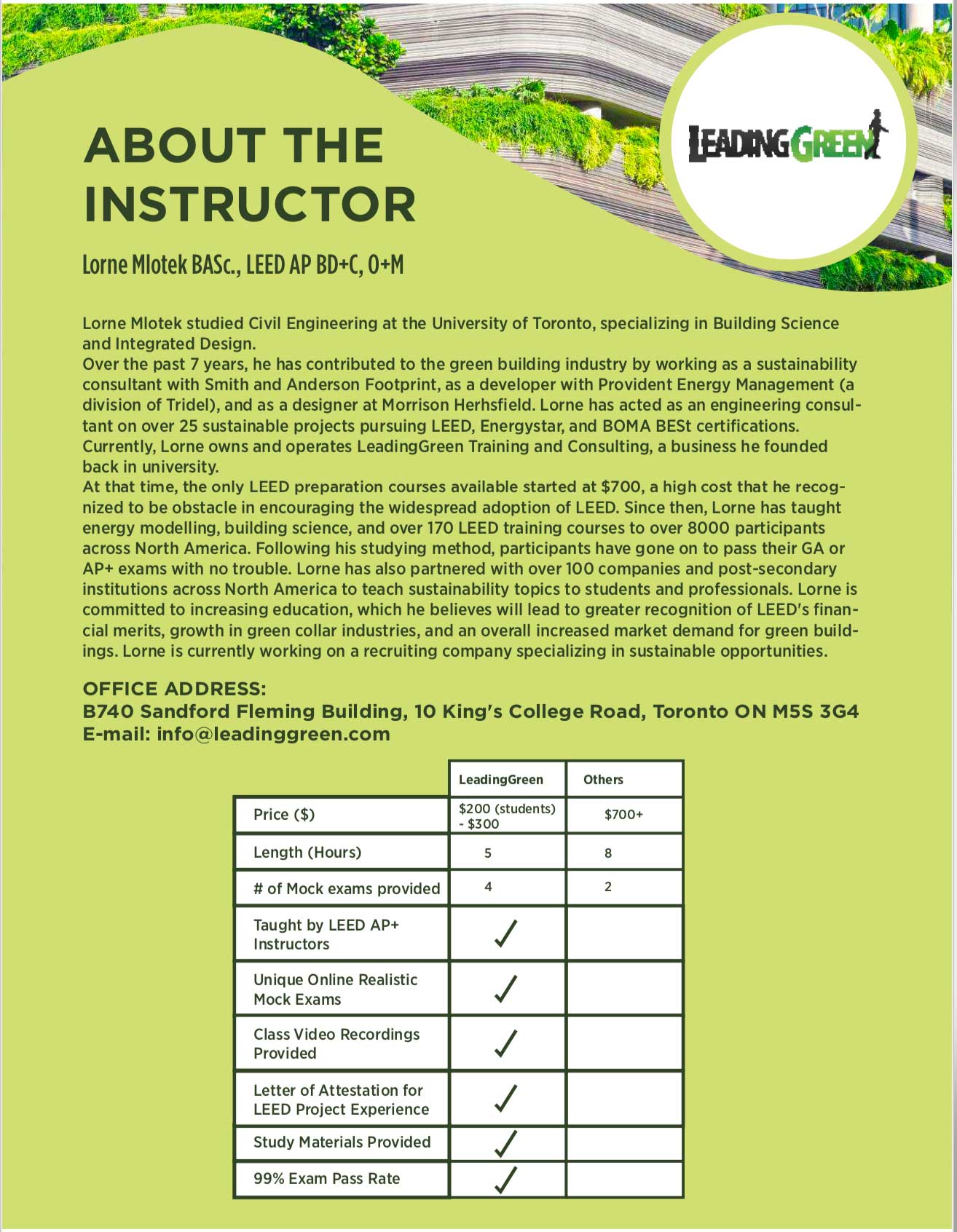|
Integrated BIM tools, including Revit, AutoCAD, and Civil 3D Visit for more information LEED Green Associate exam course

Professional CAD/CAM tools built on Inventor and AutoCAD

Understanding LEED certification is one path to joining the green-building movement—which is becoming critical for today’s architects. Architects earn the LEED Accredited Professionals (AP) designation, certifying their knowledge of how to usher a project through LEED certification. But is LEED AP just another set of letters architects can tack onto their names to appear more credible, or does it really mean something? In a world increasingly concerned about the impact of the built environment, getting a LEED accreditation can bolster your resume and give you a deeper understanding of green building—knowledge you can use to fight climate change.

LEED stands for Leadership in Energy and Environmental Design. According to the US Green Building Council (USGBC), the parent organization of LEED, it is the most widely recognized and used green-building rating system around the globe. It examines major design questions (such as how a building site is positioned), as well as minute design details (such as what the carpet fibers in the lobby are made of).
To become LEED-certified, building projects must follow rigorous requirements and documentation for different levels of LEED v4.1 certification: Certified, Silver, Gold, and Platinum. A building with a LEED plaque on it tells occupants and passersby that it’s healthier and more environmentally friendly.
LEED accreditation is conferred to people who are experts in the LEED rating system; LEED AP stands for LEED Accredited Professional. This designation ensures that professionals have the knowledge they need to take a project through LEED certification and are well-versed in all aspects of green building.
In 2009, LEED accreditation requirements for professionals became much more rigorous. In his article “Major Changes Ahead for LEED APs” in National Real Estate Investor, Keith McGlamery wrote that before 2009, all you had to do to get a LEED AP designation was take a two-hour, multiple-choice exam on one of two LEED certification systems: LEED for New Construction or LEED for Commercial Interiors. If you passed the exam, you were awarded the title of LEED AP with no requirements for continuing education.
LEED AP Neighborhood Development (ND)
Kelly Gearhart—a green-building consultant, educator, and principal at Triple Green Building Group—breaks the process of gaining a LEED accreditation into three steps:
“You can obtain study materials from the Green Business Certification Inc. (GBCI), which publishes a handbook for each of the LEED exams,” Gearhart says. Read through the materials on your own, join or form a study group, or take a course on the material. Exams are administered through a proctoring company called Prometric, which has testing centers in all major cities around the world.
According to the LEED Green Associate Candidate Handbook, to be eligible to take the Green Associate exam, an individual must be 18 years or older and agree to the Disciplinary and Exam Appeals Policy and the credential maintenance requirements. The USGBC recommends that before taking this exam, it’s useful to gain exposure to LEED and green-building concepts through educational courses, volunteering, or work experience.
To take the exam, a candidate must register and pay for the test by logging into his or her USGBC user account. After completing the registration, the candidate has 12 months to schedule and take the exam. If this period expires, the individual has to reregister and pay again for the exam. The current fees for the LEED Green Associate exam are $200 for a USGBC member, $250 for a nonmember, and $100 for a student.
According to the LEED AP With Specialty Candidate Handbook, a professional must hold a LEED Green Associate credential to be eligible to take the LEED AP With Specialty exam. Prior experience working on a LEED-certified project is highly recommended before taking the LEED AP With Specialty exam. The registration process for the LEED AP With Specialty exam is the same as for the LEED Green Associate Exam. The current fees for the exam are $250 for a USGBC member, $350 for a nonmember, and no cost for veterans.
If you have experience working on LEED projects, you may want to pursue the LEED AP With Specialty credential. Once you’ve taken the LEED Green Associate Exam, you can take the AP With Specialty exam, which is tailored to a specific LEED rating system. orks in Phoenix, AZ.
|